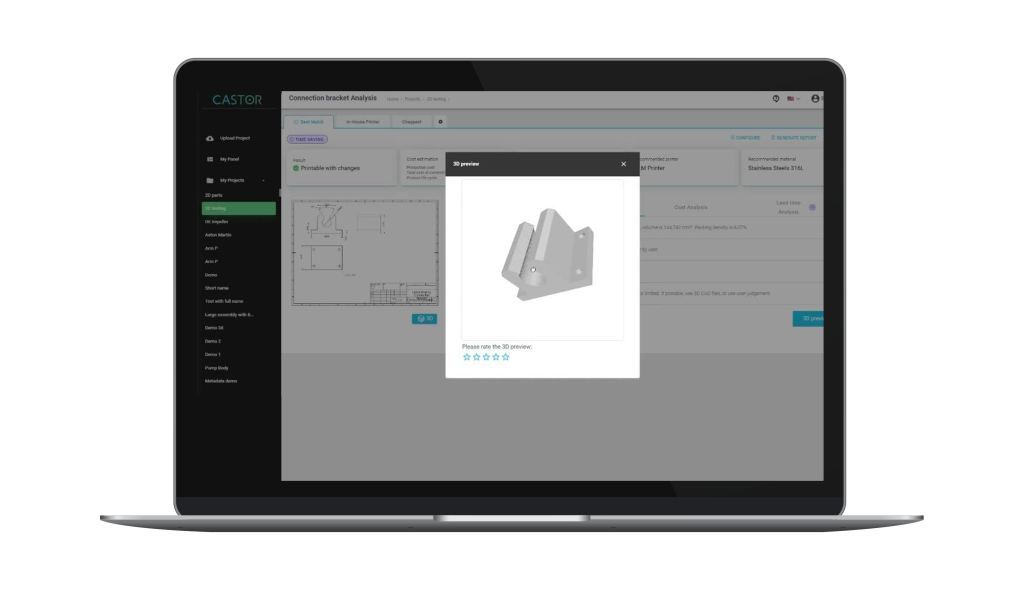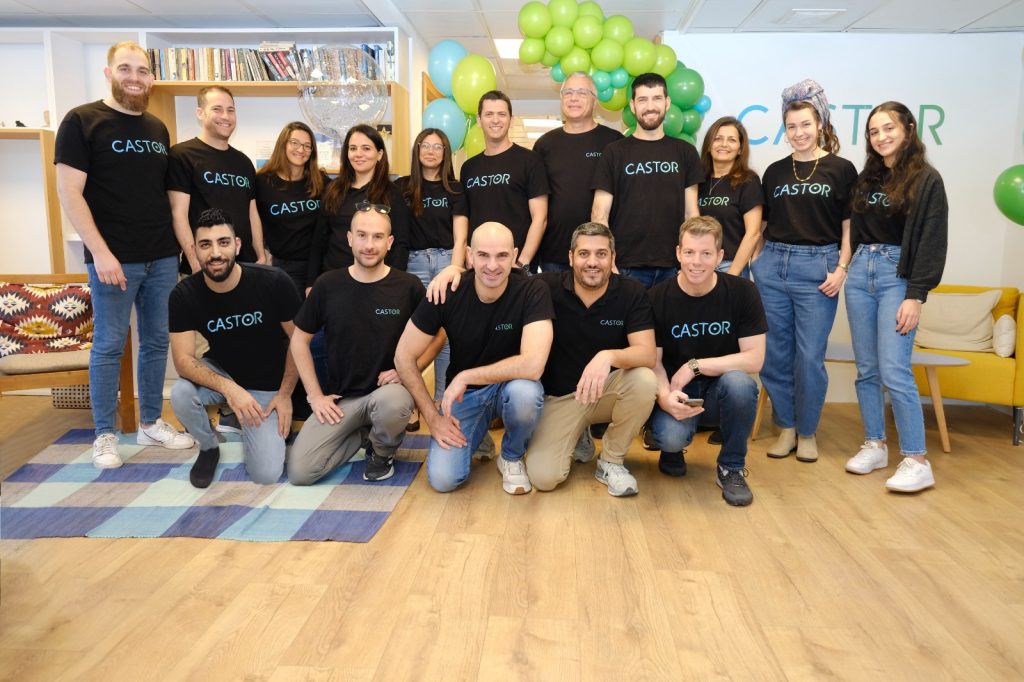3D printing software company Castor has introduced a new capability that visualizes 3D parts from 2D drawings.
This solution automatically converts 2D drawings into a simulated 3D view, bringing efficiency, speed, and accessibility to the process of transitioning from 2D drawings to 3D printing reality, says the company. Galit Cohen, Marketing Director at Castor, said, “Our journey in this direction began in June 2022 with the introduction of the ability to automatically analyze 2D drawings, both from technical and economic perspectives. This functionality enabled us to identify suitable parts for Additive Manufacturing using 2D drawings. Now, we are taking it a step further by enhancing our technology with the ability to visualize parts in 3D, greatly improving estimations of printability, cost, sustainability, lead time, and supply chain advantages. This advancement is a game-changer, particularly for companies heavily reliant on 2D PDF drawings in their manufacturing processes.”

Automating AM part selection with rapid geometric analysis
The automated simulation offers a swift Geometric Analysis, providing engineers with rapid, informed decision-making capabilities. By considering material properties, cost-effectiveness, and digital supply chain benefits, the software simplifies the selection process for suitable parts for AM within seconds. While it does not eliminate the need for a 3D file, it rapidly identifies parts suitable for 3D printing, resulting in a marked reduction in time-to-market for AM projects.
Addressing time-sensitive issues, CASTOR’s software tackles the laborious task of choosing optimal parts for 3D printing. It achieves this by autonomously extracting product manufacturing details from 2D drawing PDFs, performing calculations on size, volume, and complexity, and generating visual 3D simulations. The software suggests 3D printability, offers recommendations on technologies and materials, and conducts thorough financial analyses. The resulting findings are exported in a formal PDF report and a raw data Excel sheet.
Guiding engineers in their 3D CAD files, the software directs them on which parts to purchase or further explore. It delivers part redesign suggestions for AM, incorporating consolidation and weight reduction strategies. The advanced capabilities include a rapid assessment of a part’s potential failure, employing a specifically tailored Finite Elements Analysis designed for AM.

Castor software streamlining AM sector
Industrial manufacturing firm Siemens recently expanded its AM ecosystem by adding partner solutions on the Siemens Xcelerator Marketplace. This facilitates AM industrialization and customer benefits through offerings from Castor, EOS, and AMbitious, covering various industrial 3D printing areas. Operating within Siemens Xcelerator Marketplace, Castor’s software performs technical and economic evaluations on parts in discrete manufacturing designs. It excels in identifying additive manufacturing-suitable components, assessing materials and technology compatibility, and calculating the financial break-even point compared to traditional methods. A crucial feature is the seamless integration of Castor’s software with widely-used PLM systems such as Siemens Teamcenter, amplifying its adaptability within the Siemens ecosystem.
Investing in Castor, Asahi Kasei targeted the 3D printing market with a projected 24% annual growth. Castor’s software, driven by proprietary algorithms, automates the selection of 3D printable parts from CAD drawings, streamlining manufacturing. On another note, AI software manufacturer Oqton partnered with Castor to provide a complete end-to-end solution for additive manufacturing. The collaboration between Castor’s software and Oqton’s Manufacturing OS enables seamless business case evaluation and technical analysis, fostering profitable growth in on-demand production through an automatic, AI-driven system.
Read all the 3D Printing Industry coverage from Formnext 2023.
Voting has now started for the 3D Printing Industry Awards 2023. Cast your vote now!
What does the future of 3D printing for the next ten years hold?
What engineering challenges will need to be tackled in the additive manufacturing sector in the coming decade?
To stay up to date with the latest 3D printing news, don’t forget to subscribe to the 3D Printing Industry newsletter or follow us on Twitter, or like our page on Facebook.
While you’re here, why not subscribe to our Youtube channel? Featuring discussion, debriefs, video shorts, and webinar replays.
Are you looking for a job in the additive manufacturing industry? Visit 3D Printing Jobs for a selection of roles in the industry.
Featured image shows Castor software simulation. Image via Castor.



